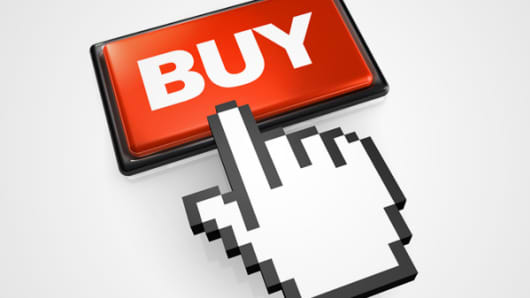And, it doesn't stop there: By 2018, global trade in the U.S., UK, Germany, Brazil, China and Australia is expected to more than triple to $307 billion and the number of shoppers making global purchases will grow to 130 million, according to a survey by Nielsen for PayPal.
Clearly, there is ripe potential to tap into new markets, but what do these international shoppers want? Understanding how, what, when, and why cross-border customers make their online purchases is the key to success. For every product you can think of — whether it's apparel, toys, electronics, cosmetics, furniture, etc. — there is a buyer out there who wants it.
Read MoreMacy's CEO: Why we dropped Trump
The most popular purchases around the world: Clothing and footwear. 39 percent of cross-border shoppers surveyed by Ipsos said they bought items in those categories. And that's consistent in most regions: North America (33 percent), Latin America (47 percent), Middle East (47 percent), Western Europe (33 percent), Nordics (36 percent), Central and Eastern Europe (50 percent) and Asia Pacific (43 percent).
Consumer electronics came in a close second at 26 percent. However, it does not rank second in all regions. In Asia-Pacific it ranks third, behind cosmetics and beauty products; in the Nordics, it ranks fourth, behind physical entertainment (e.g. books, DVDs) and travel & transportation; and in North America, it ranks a distant fifth.
So, what does it take to get shoppers from "browse" to "buy?" Cross-border customers say that the most important factors that compel them to shop internationally online are a safer way to pay, native language customer support, and free shipping.
Read MoreMcDonald's quietly changes is burger sizing
It's no surprise that secure transactions are of paramount importance for overseas shoppers – more than half of cross-border shoppers say payment security is what fosters the confidence to buy internationally. It's a concern that merchants also face. Working with a payment processor that offers world-class security and fraud-prevention tools to both buyers and sellers is a "must" for any business looking to sell online.
Customers won't buy what they can't understand, so it is worth it for retailers to invest the time and money in localizing their website in other languages and then taking the next step to offer customer service in those languages. Nearly half – 45 percent – of cross-border shoppers cite this as the top reason they would buy an item from another country.


